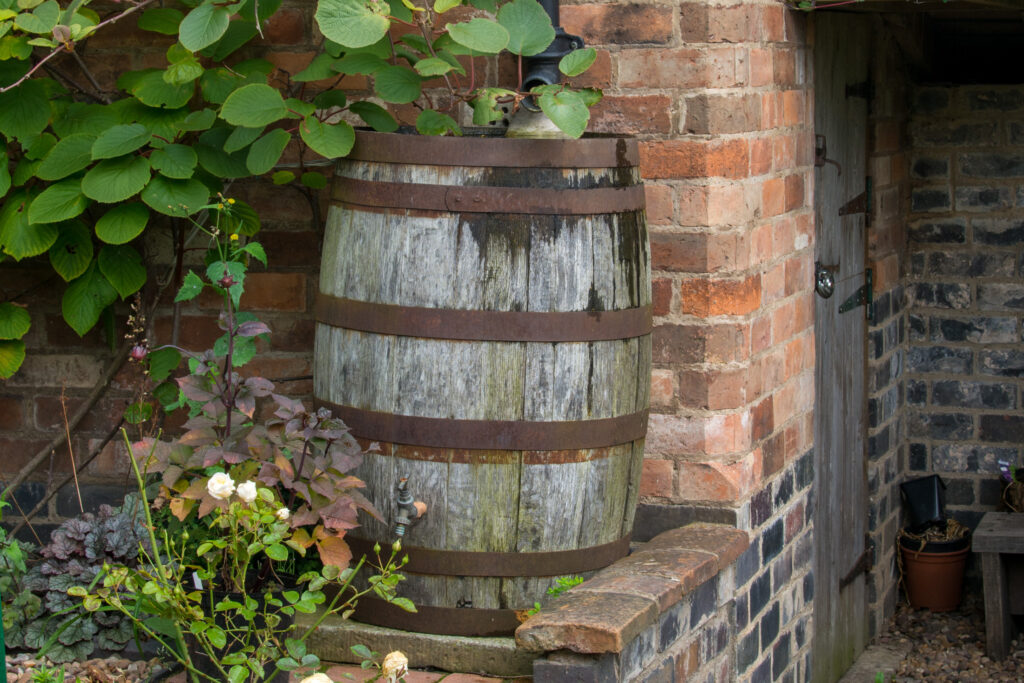
We may be hurtling into winter and given the level of rainfall we've been experiencing the thought of manually watering your garden may be further from your mind than the furthest thing in your mind right now, but trust us, if you haven’t already got things covered, now is the perfect time to be thinking of those longer, drier summers that are coming our way; because simply speaking, longer, drier summers means less available water in our gardens, and less available water means that some of our precious garden plants may begin to suffer through those drier summer days.
Before we all start to panic though, for the most part right now, established trees and shrubs that have been in the ground for over 5 years, are likely to be able to cope without (or with very little) manual watering through the summer. In this case natural rainfall levels through the year combined with the ground’s natural ability to store water and the wide-ranging roots of these plants are usually enough to see them through drier spells.
However, that still potentially leaves a lot of plants in our gardens that will require manual watering through drier periods, for instance, those with shallow root systems like annuals and spring-planted vegetables; many other edibles; young trees and shrubs; newly planted areas in the garden; perennials; those planted in containers and hanging baskets; and those planted in rain shadows of other plants or next to walls or fence posts. (We’re deliberately avoiding the mention of ‘lawn’ in this list – usually the thirstiest part of your garden!)
It might be tempting to turn on the tap in the drier months but there are some compelling reasons not to, including: firstly, with utility-supplied water becoming ever more scarce, and more of the country falling into areas classified as ‘water stressed’, many of us are now living with water meters as a driver to using water more efficiently so it can be a costly exercise to try to keep a garden watered. We never advocate watering a lawn unless it’s newly laid but using a sprinkler for 1 hour uses as much water as a family of four uses in a whole day so you get the picture.
Secondly and more importantly, plants just love natural rainwater, which contains nitrates, an important supply of nitrogen for plants which gives them their lush, green, abundant leaves. It makes sense then, that in a country that generally doesn’t seem to have a shortage of free, nutrient-rich natural rainwater falling throughout its cooler months, that we should work out ways of storing rainfall for use in the garden in drier times. Enter the humble water butt.
It may not be the sexiest garden accessory going but water butts are high up the list of being among the most useful and we never design a garden without trying to incorporate at least one extra water butt in it! If you have a roof of any sort on your property – a house, a garage, a shed, a gazebo, and more – we’d recommend fitting at least one water butt (with diverter kit) to the down pipes from each and every one of them. Too much? Perhaps not enough when you consider that a single, medium-sized hanging basket will need hand watering with around 100 litres of water during warm, dry weather during its growing period. Extrapolate that out to the list of plants mentioned above and the required number of litres for hand watering during the summer could be significant.
When you consider a small water butt will hold around 100 litres of water and a ‘standard’ size holds around 170-250 litres, it seems that the more the merrier is the way to go when thinking about water butt numbers. There are higher capacity butts available but these come with significantly higher price tags so for most of us connecting a series of smaller butts in order to increase capacity is often the more cost-effective way to go but of course that can, in turn, create an aesthetic challenge if butts can’t be tucked out of sight behind buildings.
If screens and planting can’t be designed in to help hide butts there are a number of more decorative butts available but again these are usually much more costly than the standard recycled plastic varieties that are available.
Adaptive planting is the way to go for the future but for right now, for the plants you already have in your garden, with an estimated 60,000 litres of rainwater falling on the roof of an average semi in the UK every year it makes perfect sense to try to make the most of this free, valuable, resource.
So, no buts – get water butts!




